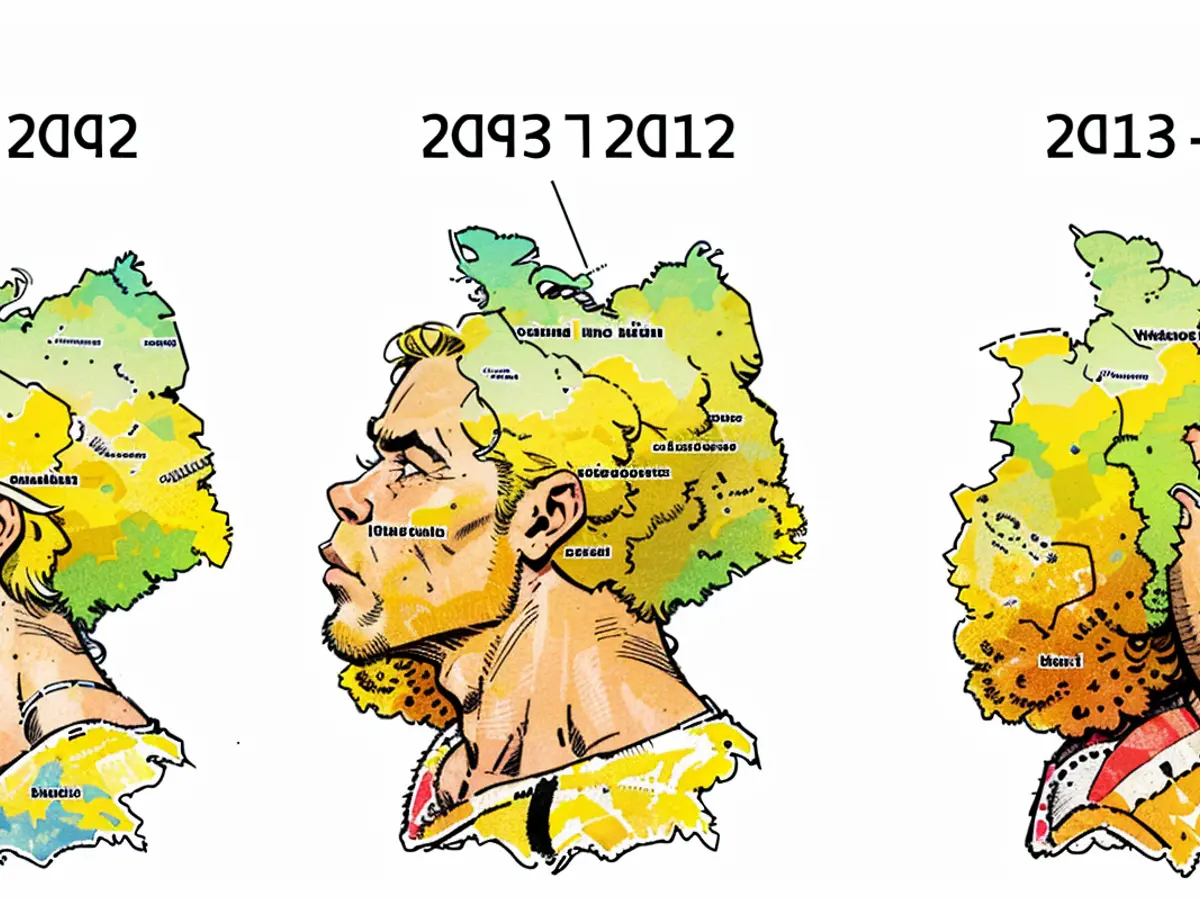Climate Adaptation Act launched - Germany has used these strategies so far to protect itself against floods and heat
The eastern part of Germany is drying out, while the south is submerged under massive water bodies: The consequences of climate change are palpable in Germany for everyone. Extreme weather events are becoming more frequent. Germany must adapt to this. However, from disasters like those in the Ahr Valley, the federal government and the states have learned very little so far. A concept to prevent future flooding exists in Rhineland-Palatinate but not yet. Similarly, such measures and plans are lacking in Southern Germany. There are even rumors circulating online that Bavaria's Minister-President Markus Söder (CSU) saved money on flood protection at the behest of his coalition partner, the Free Voters.
At the beginning of the year, the traffic light government, under the self-proclaimed climate chancellor Olaf Scholz, announced that it intended to water down the Climate Protection Law.
How the Federal States Adapt to Climate Change
The list of omissions is long. However, Berlin knows: Without long-term measures, it won't work in Germany either. That's why the traffic light coalition has passed a Climate Adaptation Law, which took effect on July 1, 2022. With this, they commit to setting measurable targets and a implementation strategy. However, it remains up to the states how this will look. Many possibilities for preparation exist. However, it is mainly the implementation that has been holding back progress so far.
This is evident in the search for strategy papers from the states on adapting to climate change. With the exception of Saarland, each federal state has had such a catalog since at least 2009, which has been repeatedly revised. Brandenburg, the driest of the states, completed its ideas in 2021 – and is thus the last federal state to have prepared a paper on adapting to the climate change. In Schleswig-Holstein and Hamburg, work on a new edition has been underway for a few years. In Saarland, the government, according to a spokesperson, is still working on strategies and implementation measures. A first climate protection concept is said to be presented in the summer of 2024.
Perhaps it doesn't even need this, because the concepts have not yet been able to prove the promised success. At least the flood in the Ahr Valley or the flooding in Southern Germany could not prevent or mitigate the disasters. Many papers are now outdated. The concept for Saxony-Anhalt was last updated in 2019. Bremen collected its ideas in a document from the year 2018, Bayern's strategy paper is from the year 2016, and Baden-Württemberg is currently revising its document from 2015.
How strongly are the Federal States affected by Climate Change?
The majority of the several hundred-page dossiers consist of proposals and ideas without legal obligations. This is all the more problematic because the states apparently know very precisely how climate change will affect their respective territories. At least, the climate change impacts are clearly stated in the strategy papers. Whether a region will have to reckon more with droughts or flooding in the future is clearly indicated. The insights are based on results and evaluations of climate and weather data from the German Weather Service (DWD) or observational programs of the states.
In total, all regions in Germany need to prepare for further increasing temperatures and heavy rain events, meteorologists and climate scientists say. "The average annual temperature will continue to rise in Germany – to a greater or lesser extent depending on global climate protection measures," says climate scientist Diana Rechid from the Climate Service Center Germany (Gerics). However, the thresholds for summer temperatures (25 degrees Celsius) and heat days (30 degrees Celsius) in the southern part of the country are already being significantly exceeded more frequently than in the north. This is partly due to the distribution of land and water masses. Over water, the air heats up more slowly, so the starting temperatures in North Germany are generally lower. The number of extremely hot days is therefore expected to increase more slowly.
However, the situation is less clear when it comes to precipitation. The data from DWD measuring stations and climate models for Germany show that extreme rainfall events are becoming more frequent. "However, this is a trend that is not yet significant in many cases," emphasizes DWD scientist Frank Kaspar. The rainfall evaluations from the radar network are only available to the authority since 2001 for the entire federal territory – the period is considered too short for clear conclusions. Reliable assessments will only be possible with these data in a few years. Climate models, however, already show that extreme weather events are increasing.
However, there are significant differences between the regions in terms of the extent of damage from flooding. The severity of the damages from flooding depends on the conditions in the terrain. Scientists also speak of "topographic structuring". For example, when the Ahr Valley sank in floods in 2021, similar heavy rainfall occurred in the Uckermark in Eastern Germany. While the water in Rhineland-Palatinate flowed towards the valleys and was hindered by the sealed soils, it seeped into the sandy soils in Eastern Germany. In the north German flatlands, water masses distribute themselves widely and above all when the soil is already saturated.
Can Germany still adapt to climate change?
The extent to which a country suffers from the consequences of climate change also depends on whether the country is politically and financially prepared. In politically unstable states and poor countries, people suffer more from global warming than, for example, in wealthy industrial nations, because the money for adaptation measures is lacking.
In countries like Germany, however, there is a lack of political will to implement the necessary measures. Climate scientist Rechid therefore advocates for more legal regulations. A pioneer exists anyway: North Rhine-Westphalia has been the first and so far only federal state to pass a climate adaptation law since 2021, which has obligated all public decision-makers to consider the consequences of global warming in their planning.
- Despite the devastating floods in the Ahr Valley and Southern Germany, the federal government and states have yet to effectively learn from these natural disasters, with insufficient measures and plans in place to prevent future flooding.
- Climate change is significantly impacting Germany, causing droughts in the east and massive flooding in the south, leading to more frequent extreme weather events. These consequences necessitate climate adaptation, yet many states lack long-term measures to effectively respond.
- Germany's climate adaptation efforts are unevenly distributed, with some states like Saarland still working on strategies and implementation measures, while others like Brandenburg, Schleswig-Holstein, and Hamburg are revising or updating their climate change adaptation concepts.
- Despite the availability of precise climate change impact data and clear indications of future risks in strategy papers, many climate change adaptation concepts in Germany are largely non-binding, including those in Bremen, Bavaria, and Saxony-Anhalt, which have not been significantly revised in recent years.








